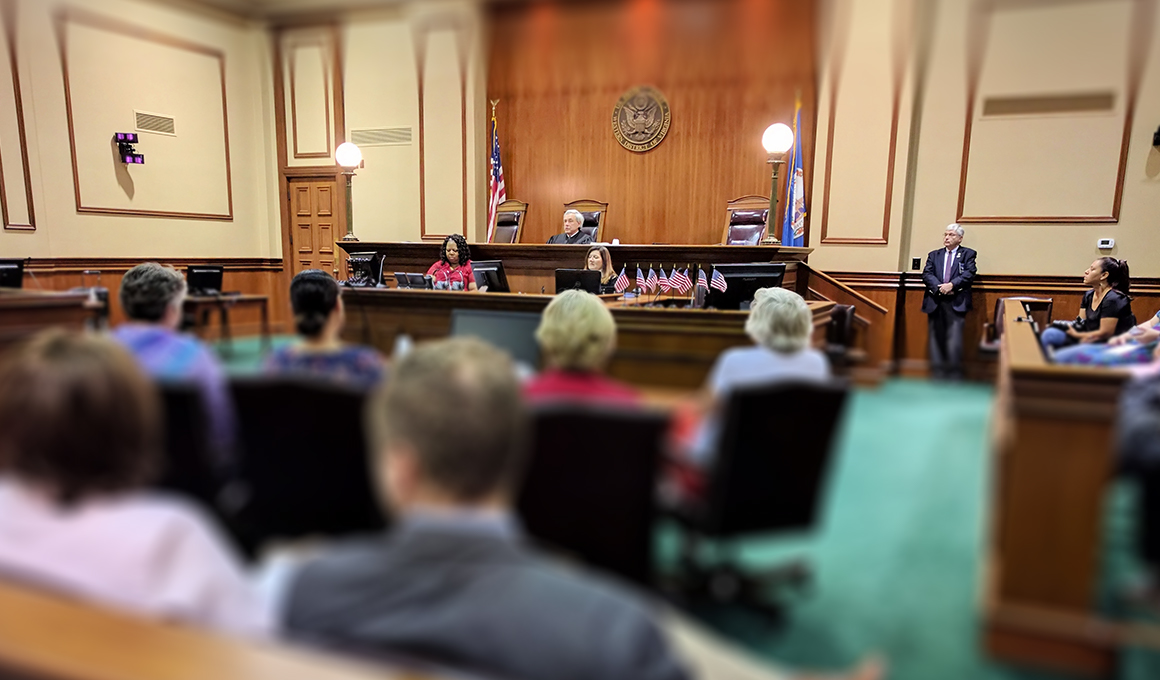Successful litigation require well-crafted trial presentations to deliver key points.
Successful litigation require well-crafted trial presentations to deliver key points.
Blog Article
How Trial Presentations Enhance Your Argument and Encourage Jurors
Test presentations offer as a pivotal device for improving legal debates and encouraging jurors. By incorporating visual help, narrative structures, and psychological involvement, lawyers can develop an engaging case that reverberates on multiple degrees. The strategic use visuals not just makes clear intricate details but additionally catches jurors' interest better than words alone. The art of storytelling plays a just as essential function in changing factual proof right into an engaging story, shaping jurors' perceptions. Recognizing these elements can dramatically impact test end results, raising the question of exactly how each part contributes to this complex dynamic.

Significance of Visual Aids
Aesthetic aids play an important function in enhancing the efficiency of test discussions, as they can significantly boost audience involvement and retention of info. In the context of a trial, where jurors are charged with processing complex info, aesthetic help offer to streamline and make clear bottom lines. Graphes, charts, and pictures can convey data and principles that might otherwise overwhelm or puzzle jurors, enabling a more simple understanding of the proof presented.
Moreover, visual aids assist in keeping juror attention throughout the proceedings. By damaging the monotony of spoken statement, these devices can punctuate essential disagreements, making them much more remarkable. Effective visual aids can additionally evoke emotional feedbacks, which can be critical in encouraging jurors to line up with the speaker's narrative.

Crafting Compelling Stories
An engaging narrative is essential in trial discussions, as it works as the backbone of efficient persuasion. It enables attorneys to weave with each other facts, proof, and psychological components right into a meaningful tale that resonates with jurors. This narrative structure allows jurors to comprehend the intricacies of the instance while guiding them with the lawyer's argument.
To craft a compelling story, lawyers ought to focus on clarity and coherence. This involves developing a clear protagonist-- frequently the client-- and describing their trip Related Site via the events concerned. Presenting the truths in a rational sequence improves comprehension and keeps interaction. Additionally, making use of vibrant summaries can produce mental images that help jurors picture the events, making the narrative a lot more unforgettable.
Moreover, integrating essential themes throughout the discussion strengthens the core message and help in retention - trial presentations. The narrative needs to not only share details however also evoke a sense of justice, highlighting the risks entailed. Inevitably, a well-constructed story promotes a link between the jurors and the situation, positioning the attorney's debate as both legitimate and compelling, therefore boosting the likelihood of a positive decision

Engaging the Jury Psychologically
Effective jury engagement pivots on the attorney's capacity to connect with jurors on an emotional degree. This connection can dramatically influence jurors' assumptions and their best decision-making.
Aesthetic help, such as photographs or video clips, can better improve emotional interaction, providing jurors with dazzling representations of the situation's human aspects. Crafting a narrative that highlights the battles and triumphs of the view people entailed makes certain that jurors see past the legal arguments and identify the human effects of their choices.
A lawyer's passionate distribution can reverberate with jurors, strengthening their psychological investment in the situation. It's vital to stabilize psychological charms with factual proof, making certain that jurors feel forced to act while remaining based in the truth.
Structuring Your Discussion

The body of the discussion should be rationally fractional into vital factors, each sustained by engaging proof. It is helpful to make use of narration strategies to weave facts right into a story that jurors can conveniently follow. Visual aids, such as charts and video clips, can enhance comprehension and involvement, aiding to highlight critical pieces of proof.
Real-World Case Studies
Analyzing real-world situation studies gives indispensable insights into the art of test presentations and persuasion. The protection group efficiently employed an approach that combined top-level specialist testimonies with multimedia presentations, which captivated jurors and inevitably influenced their decision.
An additional noteworthy example is the "McDonald's Coffee Instance," where the plaintiff's lawyers utilized graphic photos of the injuries sustained by Stella Liebeck. trial presentations. This stark aesthetic proof played an essential role in sharing the severity of her burns, leading to a significant jury award. Such situations demonstrate that impactful trial discussions often rest on the effective integration of visuals and storytelling to stimulate psychological reactions from jurors
Furthermore, the "Casey Anthony Trial" highlighted the value of narrative comprehensibility and credibility. The prosecution's failure to establish a compelling timeline reduced their convincing power, emphasizing the need of a well-structured discussion. Assessing these cases discloses that successful trial discussions need critical preparation, emotional engagement, and the capacity to resonate with jurors' values and ideas.
Final Thought
Trial discussions dramatically enhance page arguments and encourage jurors via the critical usage of visual aids, engaging stories, and emotional engagement. A well-structured discussion equilibriums emotional allures with factual evidence, inevitably reverberating with jurors' values.
Report this page